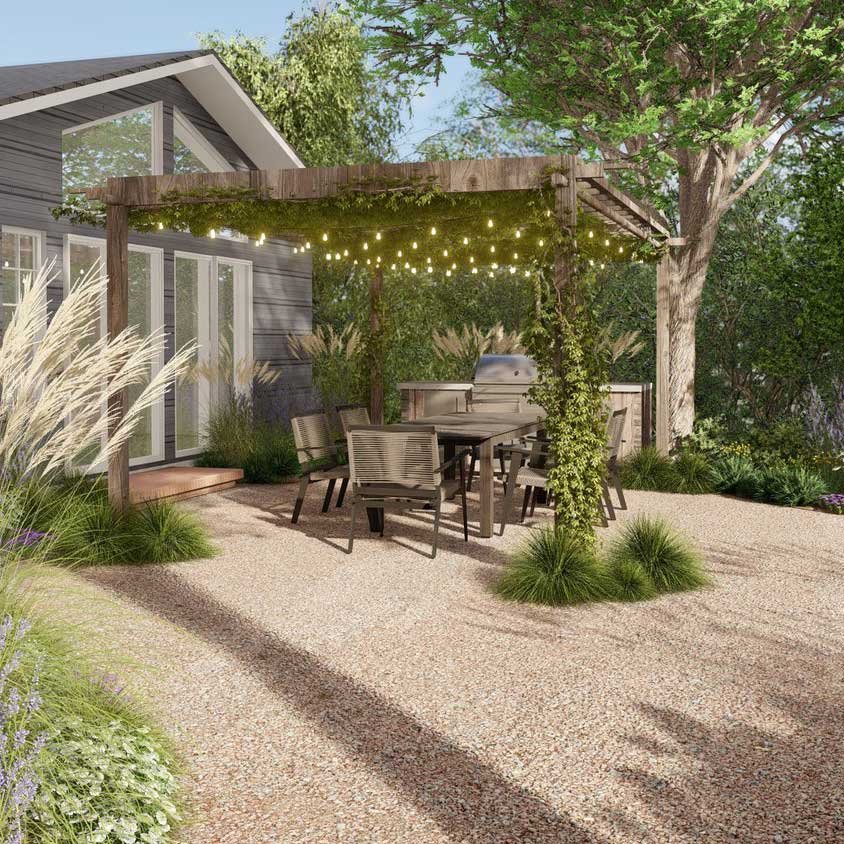Getting My Landscapers To Work
Getting My Landscapers To Work
Blog Article
Indicators on Landscapers You Should Know
Table of ContentsExcitement About LandscapersLandscapers - The FactsExamine This Report about LandscapersSome Known Questions About Landscapers.4 Easy Facts About Landscapers Shown
- A tree or bush (bush) that loses its leaves in wintertime. In the PNW there are semi-deciduous or semi-evergreen plants that might lose their leaves depending upon how chilly the wintertime is. Abelia and some hebe are excellent examples. Landscapers. - A flat event room, made from timber or composite product (made to resemble timber), typically surrounding or connected to a structure.

- Granite that is weathered to the factor that it is an extremely great accumulation. This is a natural procedure, and the outcome can be used for paths and patios. Decomposed granite is typically referred to as DG. It is particularly useful in modern landscapes. - Key landscape features being proposed in a landscape layout strategy.
Some Ideas on Landscapers You Need To Know
These objectives direct the design procedure, not the developer's design or choices. Typical design goals in Rose city are low maintenance, dry spell forgiving, and animal friendly. - Process for getting rid of or thinning the dead lower degree of a mature yard. Thatch is grass that has actually died and accumulated listed below the green blades.
However, with time this layer can obtain extremely thick and make it difficult for water, sunlight, and nutrients to obtain to sections of the turf.- The process of accumulating and controlling the circulation of water on a residential or commercial property. This can be made with grading, French drains pipes, completely dry wells, absorptive surfaces, sump pump, rain yards, and much more.
- A sluggish feeding irrigation system that utilizes adaptable tubes and emitters to send out an accurate amount of water to each plant. - The ability of a plant to survive without much summertime water.
- A garden feature where water is represented by an aggregate stone item, typically a crushed rock or granite. These are most generally discovered in contemporary and Japanese garden design.- A rock or natural flagstone patio, course, or pathway built without a concrete base. The base would certainly be compressed crushed rock and the joints would certainly be an aggregate or walkable ground cover.
Top Guidelines Of Landscapers
- A rock keeping or cost-free standing wall developed without the use of mortar. - A below ground framework that accumulate water and enables it to reduce percolate right into the dirt around it.
Landscape design that is suitable with a websites' setting in both look and sustainability without negative effects to the environment. Interrupting the landscape is a line of separation that creates aesthetic interest in the garden by dividing one segment from one more sector. This can be aesthetic or practical, maintaining one element (such as pea gravel) from obtaining combined into one more (like bark dirt).
Areas can likewise have a sensation of "room" given by trees, various other plantings, fences, or screens. The landscape near the entry to a building.
A plant that is foreign to the place where it will be planted. Not all "exotics" are invasive or damaging, and lots of can be well behaved or drought tolerant (Landscapers). A mass planting of brushes. Thicker bladed lawn yard that spread out by means of rhizomes.: The degree of soil on your property prior to bark dirt or garden compost is spread.
4 Simple Techniques For Landscapers

The objective, reason, or activity that an area is be landscaped for. Space for expanding plants for checking out, eating, or physical task.
Rock product, either rounded or fractured, that is relatively tiny- usually 1" or less. Reduced plants that are enabled or motivated to top a location. Can describe any type of "tough" garden elements consisting of statuary or rocks however most commonly is used to describe paths, patio areas, and walls.: Elevation distinction between the level of water in a pond (or the degree of the pump if it rests outside the fish pond) and the upper outlet of water which impacts efficiency of the water pump in gph (gallons per hour). Dense shrubs or trees that create a fencing, screen, or border.

Excitement About Landscapers
An even more kicked back garden controlled by curved as opposed to straight bed lines and a less inflexible structure. Typical PNW landscapes are informal. A you can try these out plant that spreads out greater than preferred, or into habitats where it does damage. Portland has a list of intrusive plants that need to not be installed in landscapes because they can spread to forests or waterways and be challenging to manage.
Can include head placements and coverage, pipeline sizing, GPM specs, and materials required to install this system. Licensed specialist that develops landscapes, schooled in engineering and style as well as in why not look here gardening.
Landscape designers typically have less schooling than Landscape Architects and are not accredited. A finished landscape layout, describing all elements for the new landscape.
A water limited HDPE product used beneath ponds, streams and waterfalls in water features. Using many growings of the very same variety to load in an area in the landscape.
Report this page